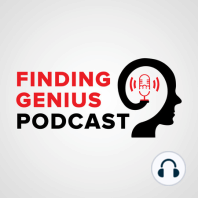31 min listen

Prosthetic Improvements – Luke Osborn, Johns Hopkins University Applied Physics Laboratory – Using Technology to Improve Amputees’ Experiences with Th…
Prosthetic Improvements – Luke Osborn, Johns Hopkins University Applied Physics Laboratory – Using Technology to Improve Amputees’ Experiences with Th…
ratings:
Length:
34 minutes
Released:
Nov 4, 2019
Format:
Podcast episode
Description
Luke Osborn, Johns Hopkins University Applied Physics Laboratory, discusses the lab’s exciting work in modern prosthetics and biomedical engineering. Osborn is a postdoctoral researcher in the Intelligent Systems Group in the Research and Exploratory Development Department at Johns Hopkins University Applied Physics Laboratory. Osborn’s expertise lies in multiple scientific areas, specifically concentrated on neuroengineering and applied neuroscience. His intensive work explores the groundbreaking new areas of advancement in tactile sensing and feedback for sensory augmentation. Osborn often works with upper limb amputees. He discusses the problem known as phantom limb, which is the sensation that an amputated limb is still actually attached. Statistically speaking, 80 to 100% of people who have had an amputation report experiencing ‘phantom’ sensations/feelings in their amputated limb, and unfortunately, most of these types of sensations are painful. He explains how the muscles that still exist in partial limbs can cause amputees to feel sensations. He talks about their work in the improvement of prosthetics, utilizing sensory feedback. The big issue: embodiment, and as Osborn explains embodiment is the integration of an artificial limb (prosthetic) into someone's own body identity so to speak, essentially the fusion of body and perception. The goal is to get people to feel that their prosthetic is a part of them. The prosthetics researcher talks about the ways they work with amputees, and the methods they use to get them to feel sensations, such as pressure, etc. Restoring sensation is a key element of their work, and Osborn explains how they target functionality. Osborn’s questions lead to more research and advancement. Ultimately, the goal is to figure out what types of sensations and perceptions can be improved, and how to improve them via new technologies.
Released:
Nov 4, 2019
Format:
Podcast episode
Titles in the series (100)
Digital Rights & Privacy | Interview With David Christopher of Open Media: In today’s podcast I interviewed David Christopher, Communications Director at Open Media. David talks about his company’s work to keep the Internet open, affordable, and more importantly surveillance-free. by Finding Genius Podcast